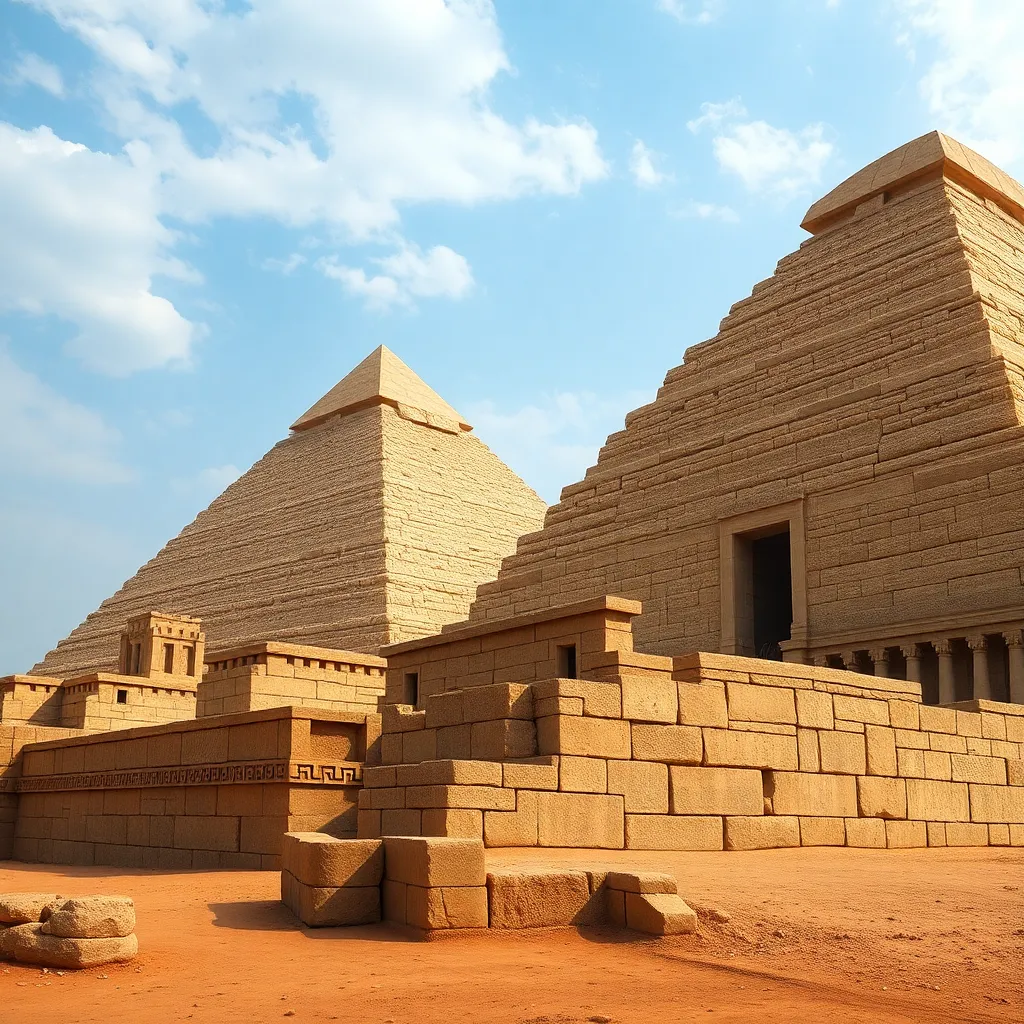The Legacy of the Pyramids: The Architecture and Engineering of Ancient Egypt
I. Introduction
The pyramids of ancient Egypt stand as monumental testaments to the architectural and engineering prowess of one of the world’s earliest civilizations. These awe-inspiring structures not only served as tombs for pharaohs but also held great cultural and religious significance. In this article, we will explore the remarkable achievements in architecture and engineering that made the construction of the pyramids possible, shedding light on their importance in ancient Egyptian culture.
II. Historical Context of Pyramid Construction
The construction of pyramids began during the Third Dynasty of the Old Kingdom and continued for several centuries. This era marked a significant advancement in architectural techniques and a shift in the cultural landscape of Egypt.
A. Timeline of Pyramid Building in Ancient Egypt
- Third Dynasty (c. 2670-2610 BC): The Step Pyramid of Djoser at Saqqara.
- Fourth Dynasty (c. 2610-2490 BC): The Great Pyramid of Giza, built for Pharaoh Khufu.
- Fifth and Sixth Dynasties: Continued construction of pyramids, albeit on a smaller scale.
B. Key Pharaohs and Their Contributions to Pyramid Architecture
Several pharaohs played crucial roles in the development of pyramid architecture:
- Khufu: Commissioned the Great Pyramid, one of the Seven Wonders of the Ancient World.
- Khafre: Built the second pyramid at Giza, known for its distinctive features.
- Menkaure: Constructed the smallest of the three main pyramids at Giza.
III. The Architectural Design of Pyramids
The architectural design of pyramids evolved significantly over time, reflecting advancements in engineering and a deeper understanding of construction techniques.
A. Evolution of Pyramid Shapes: From Step Pyramids to True Pyramids
The earliest pyramids were step pyramids, which featured a series of terraces. Over time, these evolved into the smooth-sided true pyramids we recognize today. The transformation can be summarized as follows:
- Step Pyramids: The Step Pyramid of Djoser is a prime example, consisting of six stacked mastabas.
- Bent Pyramids: The Bent Pyramid of Sneferu showcases an unusual change in angle, resulting in a distinctive shape.
- True Pyramids: The Great Pyramid of Giza exemplifies the classic pyramid shape, with smooth sides and a perfect base.
B. Notable Examples of Pyramid Designs and Their Unique Features
Each pyramid has its own unique characteristics that reflect the era and the pharaoh’s vision:
- The Great Pyramid of Giza: Originally standing at 146.6 meters, it was the tallest man-made structure for over 3,800 years.
- The Pyramid of Djoser: Features a complex of underground chambers and passageways.
- The Red Pyramid: Known for its smooth, red limestone casing that reflects the sun’s rays.
IV. Engineering Techniques and Innovations
The construction of pyramids necessitated advanced engineering techniques that were revolutionary for their time.
A. Construction Methods Used by Ancient Egyptians
Egyptians employed various construction methods, including:
- Lever systems to move large stones.
- Ramps to transport blocks to higher levels.
- Alignment techniques to ensure precision in orientation.
B. Tools and Materials Utilized in Pyramid Building
The materials used in pyramid construction were primarily local, including:
- Limestone: Used for the outer casing and inner chambers.
- Granite: Used in the inner structures, particularly in burial chambers.
- Copper tools: Employed for cutting and shaping stones.
V. The Workforce Behind the Pyramids
The construction of the pyramids was a massive undertaking that required a well-organized workforce.
A. The Roles of Laborers, Architects, and Engineers
Various groups contributed to pyramid construction:
- Laborers: Skilled workers who toiled in the quarries and on construction sites.
- Architects: Responsible for the design and layout of the pyramids.
- Engineers: Implemented innovative solutions to construction challenges.
B. Social and Economic Implications of Pyramid Construction
The pyramid-building projects had significant impacts on ancient Egyptian society:
- Provision of jobs and economic stimulation.
- Strengthened the pharaoh’s power and divine status.
- Facilitated advancements in architectural knowledge and skills.
VI. The Pyramids’ Cultural and Religious Significance
Pyramids were not only architectural feats; they also held deep cultural and religious meanings.
A. Symbolism of the Pyramids in Relation to the Afterlife
Pyramids served as gateways to the afterlife, symbolizing the pharaoh’s journey to the heavens. The shape itself was thought to represent the rays of the sun, assisting the deceased in ascending to the sky.
B. The Pyramids as Part of Larger Funerary Complexes
Pyramids were often part of extensive funerary complexes that included:
- Mortuary temples: Where rituals were performed in honor of the deceased.
- Accompanying tombs: For family members and officials.
- Sacred causeways: Connecting the pyramids to the Nile for ceremonial purposes.
VII. Preservation and Modern-Day Study
Efforts to preserve the pyramids have been ongoing since their construction, with modern archaeology revealing much about these ancient wonders.
A. Efforts to Preserve the Pyramids and Their Historical Context
Preservation efforts include:
- Restoration projects to maintain structural integrity.
- Environmental measures to protect against pollution and erosion.
B. Archaeological Advancements and What They Reveal About Ancient Engineering
Modern archaeological techniques, including ground-penetrating radar and 3D modeling, have uncovered:
- Hidden chambers within the pyramids.
- Insights into construction methods and workforce organization.
VIII. Conclusion
The pyramids of ancient Egypt represent a remarkable legacy of architectural and engineering innovation. Their construction reflects the ingenuity and determination of a civilization that sought to achieve immortality for their rulers. Today, the pyramids continue to inspire awe and admiration, serving as a reminder of the profound impact ancient Egyptian achievements have had on architecture and engineering in our modern society.




